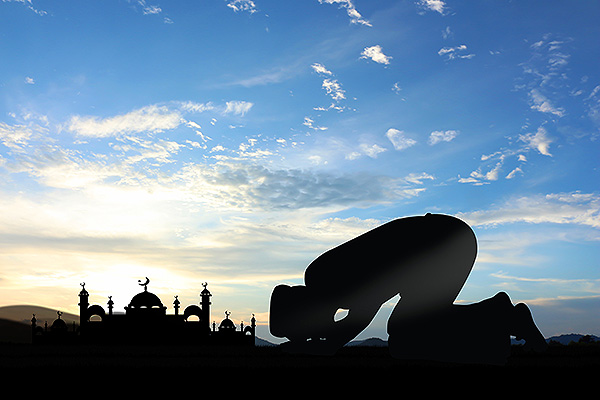
Every year, devout Muslims who are able undertake the pilgrimage to the Islamic faith’s holiest city–Mekkah in Saudi Arabia. As one of the cornerstones of Islam, every Muslim is expected to fulfilll this journey at least once in their lifetime. The pilgrimage is known as hajj. This year’s hajj began this past weekend. It is expected that approximately two million people will travel to Saudi Arabia and participate in a series of important religious observances.
Because it is one of the pillars of one of the largest faith groups in the world, let’s take a closer look at what a hajj is and what it means to devout Muslims.

Shared Characters
You may not know that some of the key figures who established the rituals around a hajj are familiar to Bible-reading Christians. For example, one of the key moments in this pilgrimage to Mekkah is to circle the black box shaped temple known as the Kaaba. Islamic teaching says that Ibrahim (commonly written as Abraham in the Christian Old Testament) left his wife and son Ismail (Ishmail, as stated in the Old Testament) to travel throughout the desert for many years. When Ibrahim and Ismail were reunited, they celebrated their blessings by building the temple known as the Kaaba. The hajj pilgrim’s goal is to make the journey to this temple in Mekkah to remember this reunion.
Meaningful Rituals and Challenging Issues

Along the way, pilgrims take other opportunities to remember elements of the story of Ibrahim. As the pilgrims pass the three pillars near the Jamarat Bridge, they throw small stones at the pillars. This reflects another Islamic story that has similar roots in the Christian Bible. As the story goes, Ibrahim was commanded by Allah to sacrifice Ismail. (The Christian Bible says that Abraham was commanded to sacrifice his other son, Isaac.) Though this was a challenging task, because Ibrahim was devoted, he began preparing to follow the command. But the devil attempted several times to talk Ibrahim out of following Allah’s command. To fight off the devil’s temptations, Ibrahim threw stones at him to keep him away and stay on course.
When pilgrims reach the Kaaba, they circle it seven times. This is known as the tawaf. You can see the scale of the crowds that surround the holy sites of the hajj in the main story photo on the landing page. With these types of crowds comes unfortunate problems. In recent years, some pilgrims have been injured or even died because of the press of people trying to reach these holy sites all at the same time. Muslim organizers in Mekkah are certainly aware of the problems raised by these crowds and have worked hard each year to guarantee appropriate safety measures for all those seeking a pleasing spiritual experience.
Dig Deeper Do some investigation of your own to learn more about other aspects of the hajj. Also, learn what the other four Pillars of the Faith are, besides this pilgrimage to Mekkah. If you are religious, what sort of spiritual activities do you conduct and where did those traditions come from?
